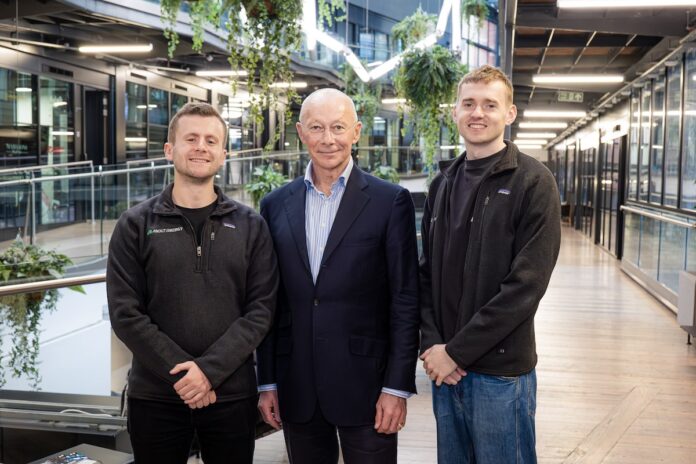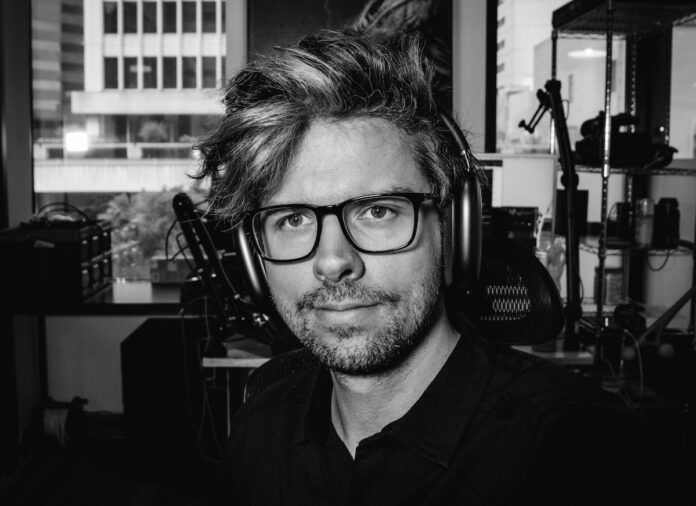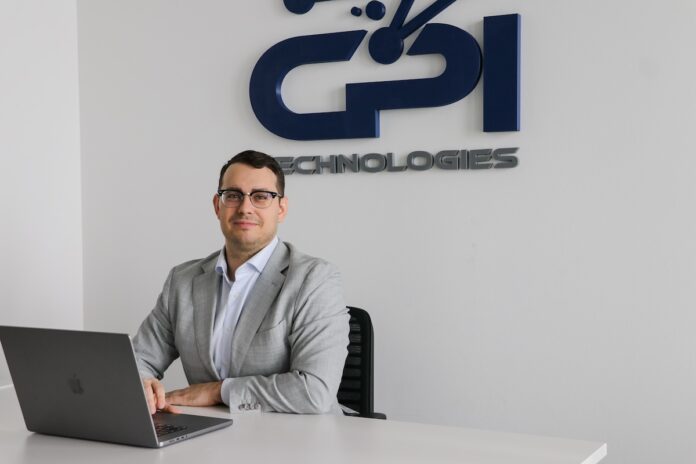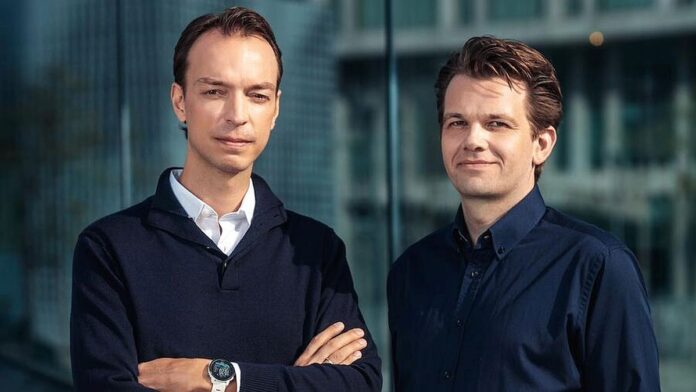Wiremind optimization solutions for transport and events
Please introduce yourself and your startup Wiremind to our readers!
Hi there, I’m Colin, the CEO and co-founder of Wiremind. Together with my associate Charles Pierre, we established Wiremind in 2014.
As the CEO, I lead Wiremind’s overall strategy and vision to make sure they are in line with our company’s goals. I also remain closely involved in the product development cycles as I want to contribute to the enhancement and innovation of our offerings.
Wiremind is a tech company that works with B2C businesses in the transportation and entertainment sectors to digitize and optimise their commercial offerings. From assisting our passenger transportation clients in filling their trains, buses, or aircrafts with passengers to enabling our freight customers to optimise their cargo capacity or supporting our sports and entertainment clients in filling stadiums and concert halls, we achieve all of this while maximising our clients’ revenue while having full capacities.
We achieve these results with a great focus on employing advanced Artificial Intelligence technology, but also through prioritising the design of our products to deliver smooth experiences to our customers while also handling large amounts of data.
How did you get the idea of Wiremind?
My early industry experience stemmed from working in pricing & revenue management departments, where I gained valuable insights into the transportation industry and its respective set of challenges. This is also where I met Charles and where I became aware of IT infrastructure being dated and Revenue Managers relying on rigid and disjointed operating systems to conduct their daily activities, which later influenced my decision to co-found Wiremind.
Simply put, we wanted to find a way to leverage advanced Deep Learning technology and great UI/UX to deliver seamless user experiences while processing large amounts of data. This in a bid to maximise operations for Revenue Managers and other key systems managers in transport.
Expanding from there, we’ve applied our expertise to a diverse range of projects, from optimising bus company revenues to forecasting passenger demand in the railway sector to managing air cargo capacity for airlines and optimising ticket sales for football clubs.
Why did you decide to start with Wiremind?
Charles and I founded Wiremind because we recognised an opportunity to develop an entirely new Revenue Management ecosystem by leveraging the latest software and artificial intelligence technologies.
For instance, this could provide analysts with a sense of empowerment, akin to being a skilled aircraft pilot equipped with an incredible engine to navigate and manage business operations. This was our vision and, thanks to our industry expertise and an incredible team, we managed to make this come alive and build the software.
Over the years, our aim has been to continuously innovate. Shifting from an exclusive focus on transportation to diversifying into other industries, and from a primary focus on Revenue Management to a wider array of product offerings, our journey has been marked by continuous expansion. Now, we offer ticketing and distribution solutions that are fully integrated into the same ecosystem, simplifying and optimising the commercial offering.
What is the vision behind Wiremind?
Our vision is rooted in transforming traditional IT landscapes. Conventional setups often suffer from fragmentation, with numerous systems operating independently, posing challenges for administrators when it comes to management and the implementation of commercial innovations. Our objective was clear: achieve maximum passenger capacity on all departures while maintaining competitive pricing. In the end, this is what optimisation is all about.
By reducing complexities, enhancing integration, and optimising maintenance processes, we envision a future where businesses can navigate their IT environment with ease, unlocking greater potential for growth and advancement.
How difficult was the start and which challenges you had to overcome?
Without the need for fundraising, Wiremind was established and grew by focusing on its product and expertise. However, it was a challenging start as we were considered a small company, competing with industry giants.
Recognising the challenges posed by our competition, we embarked on a strategic diversification journey with competition tracking, for example. Our primary objective was twofold: to foster the growth of our company and to carve out a distinct and resilient identity within the market.
Who is your target audience?
Our target audiences can be grouped into three distinct categories, each aligning with our different product offerings. These categories encompass passenger transportation, air cargo, and entertainment. Be it airline operators, concert halls, or freight forwarders, user experience is our utmost priority.
What is the USP of your startup?
We could divide our differentiators into four points. Firstly, we have strong industry expertise, and our background in transport and logistics allows us to speak the same language as our customers and understand their needs. Then, we are focused on the user experience and product culture. We aim to create products with great designs and seamless workflows. For that to be possible and deliver full value, we believe that algorithms should be properly rendered to the user.
Thirdly, technological advancements are another one of our advantages. With full-stack proficiency, we possess comprehensive knowledge spanning software, data, artificial intelligence, and more. Most importantly, we know how to combine everything together into great solutions that achieve remarkable results. Lastly, our commitment towards performance sets us apart: we commit, we deliver, and we do it fast.
Can you describe your typical workday?
No workday ever looks the same. As CEO, there’s a lot of different internal teams I need to drive – our product teams, the marketing team, the financial department, etc. – so I prioritise spending efficient time on meeting with everyone. I have optimised my agenda structure on a 2-week rolling meeting structure, where I see all my team leaders on a regular basis, addressing all topics, with sufficient spare time to work on all topics which require my attention or contribution. I target two default meetings per day, and the rest of the day is spent on focus time or ad-hoc meetings. This also gives me sufficient time with external parties I need to check-in with, for example long-term partners or potential new customers.
Where do you see yourself and your startup Wiremind in five years?
As a company, our current focus is on scaling up and consolidating our assets to ensure they are sustainable for the long term. Specifically, we are working towards building self-sufficient, all-in-one ecosystems. This is particularly true for our distribution systems, which are integral to our clients’ commercial offerings and must seamlessly integrate with our other products.
In the upcoming years, we will keep focusing on improving our products and introducing new solutions to the industries we serve. This has always been a priority for us, and I genuinely believe that this is also the reason behind our success.
In parallel, we’ll keep adapting according to our growth by adjusting our organisation and processes and investing more in brand awareness. Our overarching goal is to be recognised globally as a leading provider of Distribution and Optimisation solutions for B2C transport and event companies.
Which 3 tips would you give to future founders?
1. Identify the problem you intend to resolve: Successful businesses often stem from a genuine dedication to solving real-world problems. When your company’s mission revolves around problem-solving, you not only find a strong sense of purpose but also enhance your prospects of creating something valuable and long-lasting. In my case, founding a company was not my goal but rather a means to build the type of product that I had in mind to solve the problems that I observed, and then everything derived from that.
2. Prioritise innovation & quality: Make innovation and unwavering commitment to quality the foundation of your business. These principles will not only set you apart from the competition, but they will also keep you motivated in the long run.
3. Maintain long-term motivation: To stay motivated through the inevitable highs and lows, ensure that your business aligns with your deepest goals and values.
Thank you Colin Girault-Matz for the Interview
Statements of the author and the interviewee do not necessarily represent the editors and the publisher opinion again.
